General Insurance Blogs, Articles & Updates by - Magma HDI
Have us call you
- RENEW YOUR POLICY
- BUY NEW POLICY
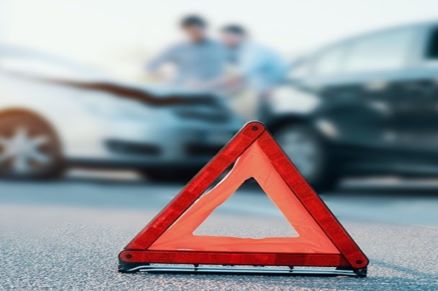
Best tips to reduce premium of your two wheeler
Two-wheelers like scooters and motorcycles are the most commonly used vehicles due to their fuel efficiency and ease of use on congested roads and streets. As a result, the number of two-wheelers sold is several times that of cars. But, at the same time, more two-wheelers fall prey to numerous road accidents daily.
Two-wheeler owners must get their vehicles insured as it protects them financially against any accident. Unfortunately, people always assume that insurance is an expensive liability as it drains the money in premium and is rarely used. People fail to understand the importance of having insurance cover for those unfortunate events.
Whether you just have basic liability insurance or comprehensive coverage, it's important to ensure that you're getting the best deal possible. In this article, we bring seven strategies to reduce the premium of your two-wheeler insurance.
1. Compare policies:
Start by comparing different policies and their features. It makes sense to examine two or three companies, just in case, there is a better policy with lower prices out there. There are many policy comparing tools available online to help you estimate the insurance premium. You can also find multiple plans directly from the websites of reputed insurance companies that come with the best features and premiums.
But remember here, a lower premium doesn't always mean a good deal, and going with the lower-quoted company isn't always the sensible decision.
2. Add-on covers:
Add-on covers are great to increase coverage without buying multiple policies at a time. However, be wise with the add-ons you choose. You may not need all of them in a policy, withdraw unnecessary ones as they will only increase the premium. Read your policy document line by line and ask your insurer to remove anything you don't need.
3. Claim loyalty points from the existing company:
If you have bought your other insurances like health, home, travel, from a particular company, there are chances to get a loyalty discount coupon from the existing company. In addition, several insurance companies offer bonus points to loyal customers and support them with additional benefits for their future purchases.
4. Try negotiations:
There is no harm in asking for an additional discount. Companies with an aim to promote their policies often give in to such negotiations. So give it a try and test your luck. More often, you will succeed in bargaining.
5. Maintain a good driving record:
Many insurance companies look into your past driving records to determine the premium. If you drive safely and do not raise any claims during the policy period, you are rewarded with No-Claim Bonus points. Maintaining a good track record is key to getting a lower insurance premium. In addition, driving safely is always a good thing to secure you and others on the roads.
6. Pay a higher deductible:
In case of any mishaps, if a policyholder pays some amounts from the total repair cost during claim settlement, this is called deductible amount. The deductible is inversely proportional to the premium. Therefore, the 2 wheeler insurance premium lowers if you choose to pay a higher sum as deductible.
7. Additional discount to 32 to 60 years age group:
Companies offer more discounts to responsible drivers. People in the age group of 32 to 60 are considered responsible drivers. If you meet this age criteria, ask for a possible discount on your premium for the policy.
Auto insurance prices are likely to continue increasing in the future; however, you can apply many smart tips to reduce the sting. These 7 tips should help you cut-cost to a great extent on your premium.
TO KNOW MORE ABOUT COST-EFFECTIVE 2 WHEELER INSURANCE FOR YOUR VEHICLE, CLICK HERE…
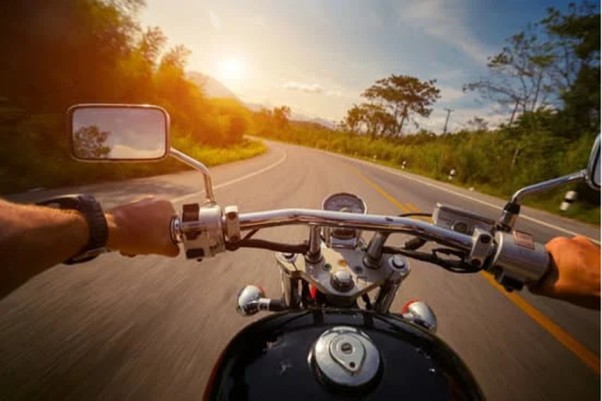
Six Tips to purchase a good bike within your budget
Two-wheelers are always the easy moving, compact and sleek asset to glide through congested traffic and to move faster on the roads. Because of the ease of commuting and the low price compared to cars, they remain the first choice for the middle-income and young people.
If you are planning to buy a two-wheeler, you would say that a test drive of a few models is important. But practically, you should also read these six golden tips that help you make the right decision and save some money.
1. Purpose of purchase and requirements:
You should be clear with your objectives of buying a two-wheeler. Then, do proper research of the types, models, and other requirements, including the reviews of your shortlisted brands. Bikes are a versatile commodity, and they come in numerous shapes, sizes, types, and brands. You can use them for long rides, sports or racing, or as a day-to-day commute vehicle. Therefore, considering how and where you will use your two-wheeler is essential to finalise the model.
2. Set your budget:
Make sure that your dream two-wheeler suits your pockets too. Decide on a clear budget for your purchase and look for the bikes in that range. This helps you to narrow down the choices and the best fit. Remember that you will have to take care of maintenance, service and insurance of your bike as well.
3. Effortless handling:
Don't compromise your physical abilities and feasibility for some cool model of bike that you see. Choose the perfect height and the weight of the bike that you can handle conveniently. If you enjoy speedy rides, then you should opt for a sports bike. But if you are a family person, then sports bikes are not your category. Always give preference to high-performance and bikes with good mileage.
4. Maintenance and aftercare:
Make sure that the model or type of bike you choose has extensive and quality service centres. Wide network of service centres helps you to get your vehicle repaired easily. In addition, multiple brands offer free extended service options for a certain period that can save on maintenance cost. Also, keep in mind that regular servicing and good maintenance are necessary for the long life of your bike.
5. Customer reviews:
Customer reviews are crucial and can give you some genuine feedback about the two-wheeler you are considering. Thorough research of on-road reviews of users can further provide you with information about the two-wheeler, its attributes, real-time mileage, and many other aspects that a salesperson at the showroom might not tell you.
6. Purchasing insurance:
Your task doesn't end with just buying a bike. Bike insurance is essential and a must thing to be done. Insurance coverage for two-wheelers got mandatory after the Motor Vehicle Act in 1988. Adjust your budget according to your annual insurance premium. For safe and easy rides, secure your vehicle with bike insurance. You can also check bike insurance online for the best premium. Compare it all and choose the best fit for your bike and act smartly.
Lastly, make sure you compare across various brands and look through multiple dealers and the offers.
PURCHASING A NEW BIKE? CLICK HERE TO KNOW THE BEST ONLINE BIKE INSURANCE…
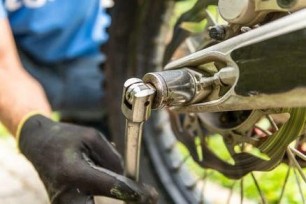
Five healthy habits that can enhance the life of your bike
Motorcycles are a motorhead's most prized belongings. While some people use them for transportation, others use them for enjoyment and sports. Owning a motorbike requires taking care of it and ensuring that it is not damaged. Even when navigating challenging terrain, a well-maintained bike will not let you down. However, ignoring your bike may result in unnecessary damages.
Keeping your motorbike in perfect condition is as significant as owning it. To help you with that, we've discussed five essential points to keep your motorbike in good working order.
1. Changing your bike’s engine oil at regular intervals:
Multiple mechanical pieces constantly move and rub against each other in your motorcycle's engine every day. To ensure their best functioning and to reduce friction, you must lubricate them with motor oil. Unfortunately, dust and particles thicken the oil with time, reducing its lubricating power. Changing your motorcycle's oil every 2500-3000 kilometres helps improve performance and safeguard the engine from harm caused by outside elements mixed in with the old oil.
2. Checking the drive chain:
The drive chain is an essential component of your motorbike, and neglecting it is a call to a shorter service span. Inspect your drive chain regularly and ensure that the chain tension is correct. Lubricate it, particularly while it's heated. This allows the oil to flow and get into all portions of the chain, making it smooth for functions.
3. Taking care of your tyres:
You simply can't get anywhere without the tyres of your bike. The big rips or cracks on the tyres can cause them to lose friction. Check if the tread depth is within the approved limit. Don't hesitate to change them if you believe they are no longer safe.
Also, check the air pressure of the tyres regularly. The proper air pressure reduces or eliminates the possibility of a puncture, enhances bike control, and extends the life of the tyres.
4. Looking after the filters:
When your bike's air filter is congested, the engine has to work harder. Experts recommend cleaning the air filter using compressed air. If you realize that cleaning the air filter is becoming tricky, it is time to replace it. You must also ensure that the gasoline filter is clean and that the fuel lines are free of corrosion and cracks. You must repair them right away if you see any damage.
5. Checking up on your brakes:
Check brake fluid levels at regular intervals to ensure your motorcycle's brakes are properly functioning. Replace the brake fluid according to the manufacturer's instructions. In addition, you should check the thickness of the brake pads and replace them when needed.
Give your time to work on the above tips to keep your bike operating smoothly. This will help your 2 wheeler survive longer while giving you a comfortable and trouble-free riding experience.
Also, don't delay taking your motorcycle for regular servicing. Although this will cost you a few bucks, if you think of a longer run, you'll only benefit from it. Insurance is another way to take care of your bike. You may purchase 2 wheeler insurance online and choose the one with an attractive premium and additional features to safeguard your vehicle against any mishaps.
Click HERE to explore all the 2 wheeler insurance online plans.
Disclaimer: The information provided above is for illustrative purposes only. To get more details, please refer to policy wordings and prospectus before purchasing a policy.
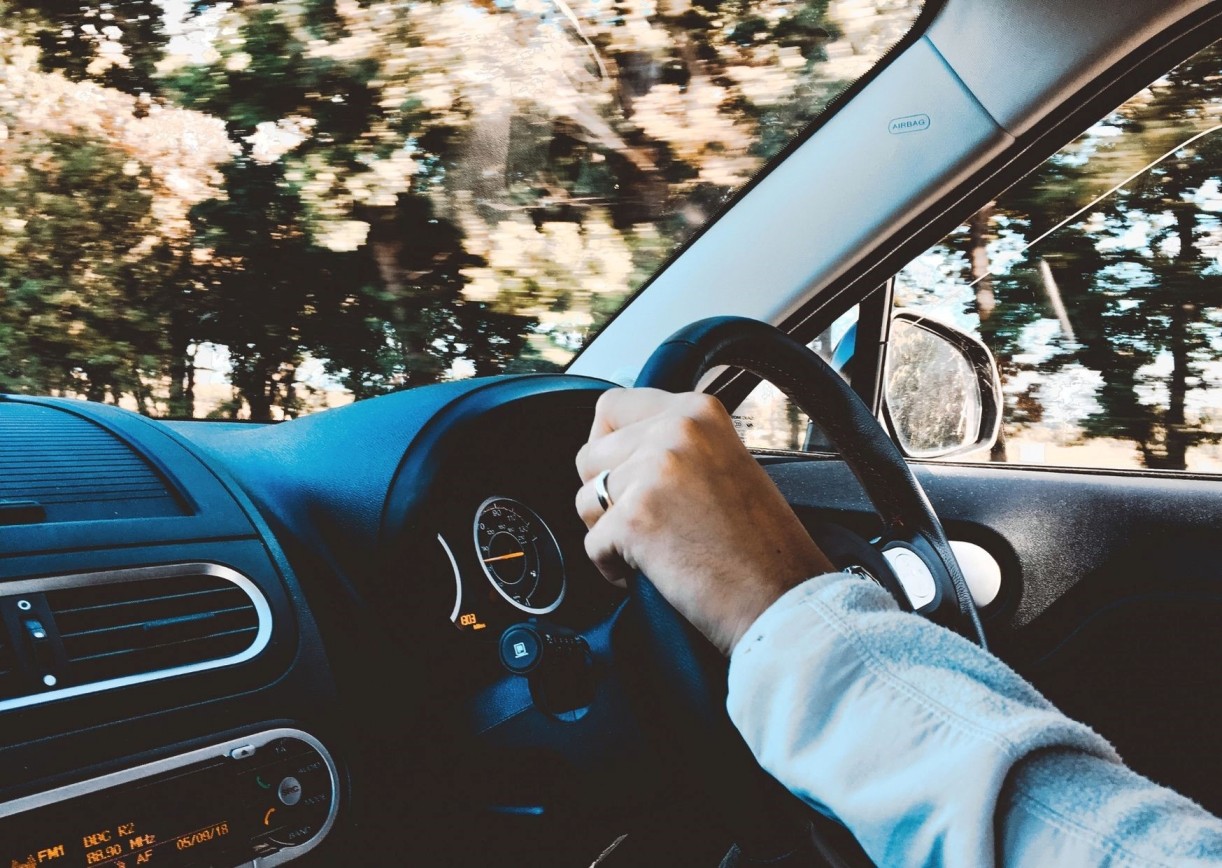
Six car driving tips for first time car buyers
Are you buying a new car? If you're a teenager, or an adult, getting a car is always a great feeling. So, excited to get behind the wheels but haven't driven a car before? Don't let the fact of being naïve hold you down because you have to begin from a lower level.
We bring some essential tips that will help boost your learning process for becoming a good driver. But, before that, don't forget to safeguard your vehicle with car insurance. We recommend you get car insurance even before you start learning how to drive.
Here are six car driving tips that every new driver should follow:
1. Get comfortable in your vehicle –
Multitasking is required while driving a car, particularly with the legs. With your feet, you must manage the clutch, brake, and accelerator. Therefore, make sure that you're positioned comfortably in the driver's seat. You should be at ease while reaching these controls. Maintain good posture, adjust your seat sliders, and place yourself in such a position where you can see all of the mirrors.
2. Hold the steering wheel in the correct manner –
This small thing is going to make a huge difference in your learning process. There's a lot you can learn about steering handling. But we'll just use the thumb rule for now. Much like a clock, grip the driving wheel with your hands at 9 and 3 o'clock for good steering control.
3. Avoid distractions –
Because most people become worried when driving, it's important to avoid anything that may lead you to lose attention and become distracted. Therefore, put your phone away because it may cause disturbance throughout the driving. The same holds true for music; we advise against playing loud music while learning how to drive.
4. Start slowly and increase progressively –
Begin your learning at a slow and steady pace. Keep a close eye on your speed and get used to it. Increase your driving speed once you're comfortable at the current speed.
5. Drive with a right mind-set –
Driving requires a lot of focus as a novice to know when to push the clutch and which way to shift the gear. Your behaviour may impact and hinder your learning process if you're uptight or in a foul mood.
6. Drive-in all situations and with different vehicles –
Get off the familiar territory and explore new routes once you've learned the basics and are comfortable with your inputs. Again, don't go all-in on a congested city trip. Take things slowly, and don't be scared to experiment with different cars. This will help you in gaining self-assurance and achieving your objective more quickly.
To sum it all, the above tips will help you in becoming a good driver, but keep in mind that the road is full of unknowns. You must safeguard your brand new vehicle with car insurance. Even if you are not at fault, a vehicle accident may be costly. Moreover, managing and paying for it can be expensive, time-consuming and hectic. A good car insurance policy beforehand comes for your car's protection.
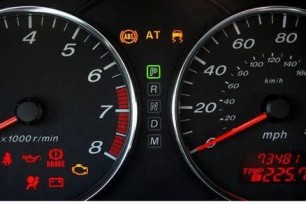
Five car dashboard warnings that you shouldn't neglect
Your vehicle’s dashboard is usually something you don't give much attention to. That's because, unless something goes wrong, it often appears the same every time you drive. Cars have thousands of moving components comprising dozens of linked systems powered by cutting-edge technology and sensors. With that much computing power on board, if any error occurs, your car will undoubtedly alert you about them.
All the warning indicators in your car are explained in detail in your car's user manual, but reading through it may seem like a chore to many. However, the warning lights are there for a reason, and knowing what they represent can prove to be the difference between a good trip and a breakdown.
Here are five warnings that appear on all vehicle dashboards that you should never ignore.
1. Engine warning indicator:
This indicator means there might be a problem with your engine's primary systems. This problem might be as minor as a faulty sensor or a damaged spark plug or as severe as a damaged fuel pump. This indicator blinks for a few seconds when you start your vehicle. If the indicator remains on or blinks continuously, it indicates a serious problem.
2. Oil pressure indicator:
This indicator means that your engine's oil pressure is low. This might also mean that you're keeping low on engine oil. If this light comes on, turn off your ignition right away. Oil's shortage can cause irreversible engine damage. Check the oil level once you've parked safely on level ground. Fill it up if it's below the required mark. If the oil level is adequate, this might indicate a problem with the oil pump.
3. Brake warning indicator:
This indicator shows that you have left the handbrake on. Still, if it continues to flash even after you release the handbrake, it might indicate a problem associated with the braking system. See a mechanic right away.
4. Battery indicator:
It signifies that the alternator responsible for charging your car battery is malfunctioning and cannot provide an adequate charge. As the cells degrade with time, it might also be an issue with the battery. With the alternator and battery functioning poorly, you should minimize its load by turning off systems like AC and LEDs. Find a mechanic at the earliest because there may come a time when your vehicle won't start at all.
5. Engine temperature indicator:
The indicator typically signifies either your engine is overheating, or your coolant level is low and needs refilling. When this indicator flashes, it’s best that you immediately come to a halt and allow your engine to cool down. Check your coolant level and search for any leaks once the car engine has cooled. If the coolant level is correct, this indicator trigger might be a sign of a more severe issue, such as a damaged water pump.
An overheated engine can distort, causing parts to fail. Avoid driving further and tow your vehicle to the mechanic to avoid further damage to your car’s engine. Your car insurance features like roadside assistance will help you get complete service in case of any mishap in the middle of the road. You can enjoy the benefits of car insurance coverage without spending money from your side.
While these indicators signal that something needs attention, there is typically no reason to be alarmed. Most warning indicators will not leave you stuck, so you can generally safely drive yourself to a service station. Remember that these indicators change across automobile manufacturers and even within the same manufacturer's models. It is best to check with your mechanic if something worrisome flashes on your vehicle dashboard before it gets you in trouble.
Click HERE to know more about different car insurance plans suited for your car.
Disclaimer: The information provided above is for illustrative purposes only. To get more details, please refer to policy wordings and prospectus before purchasing a policy.
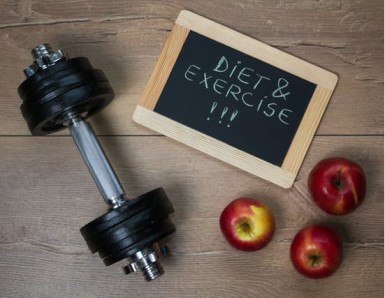
Six benefits of exercise and good eating habits
In today’s pandemic time, wellbeing and health have become more important than ever before in our life. People have started giving serious attention to personal health like their career, entertainment and other things. Change in day-to-day habits, increase in pollution, and several other factors severely impact an individual’s health. It may lead to multiple health diseases and medical problems.
Medical bills for such diseases are high, and to protect yourself and your family from this burden, one must invest in a good health insurance plan. You can check for online health insurance policies of various companies by comparing their schemes and payable premiums.
Apart from a good health insurance plan, a regular workout and a proper diet are essential to maintain a healthy lifestyle. Following are some of the many benefits of exercising and keeping a balanced diet.
1. Prevention of disease:
Regular exercise and proper diet can prevent heart disease, high cholesterol, diabetes, high blood pressure, arthritis, and several types of cancer. Appropriate workout regimes and diet can boost your immune system to fight against all kinds of diseases.
2. Boost your mood and energy:
Diet and workouts have a significant impact on your mood. A chemical called endorphins is released due to certain exercise forms, which helps make you feel positive. A good mood and positive energy can make your day more productive at work. It also helps you to remain mentally fit.
3. Brain health and memory:
Various nuts and fruits included in your diet can help you sharpen your brain memory. Even meditation benefits you to concentrate on things quickly. The studies prove the benefits of physical exercise, especially aerobic exercise, with positive effects on brain activation on multiple fronts.
4. Relaxation and sleep:
Many of us might be concerned about our sleeping habits. A proper workout helps you to get a sound sleep. But, on the other hand, a heavy meal can turn your night into a restless one. So, both things should be in proportion, and these restless nights can turn into rich ones.
5. Help in weight loss:
Improper diet and workouts can lead to obesity, which can cause many cardiac diseases. Cardio exercises like aerobics, running, cycling, walking can help you to reduce your obesity level. Fewer intakes of calories in your diet will help your metabolism work fast and digest your food soon. Lower the fat content in your body and lessen the chances of getting ill.
6. Good for muscles and bones:
Physical activities like weight lifting and a proper amount of protein can help you build your muscles. It also helps to grow the strength of your bones and their density. Have an adequate amount of nutrition in your meal, and you'll surely see the outcome in future.
Apart from diet and proper exercise, you should have a full-body check-up once a year. An early diagnosis can help you to recover from various diseases and helps increase your lifespan. Various online health insurance companies provide complimentary full-body check-ups of the client once a year post renewal.
Your entire lifestyle wagon wheel relies on these crucial aspects, so plan your roadmap to health and fitness thoughtfully. Any negligence in this can land you up into severe trouble.
LOOKING FOR THE BEST HEALTH INSURANCE PLAN FOR YOU? CLICK HERE TO KNOW MORE…
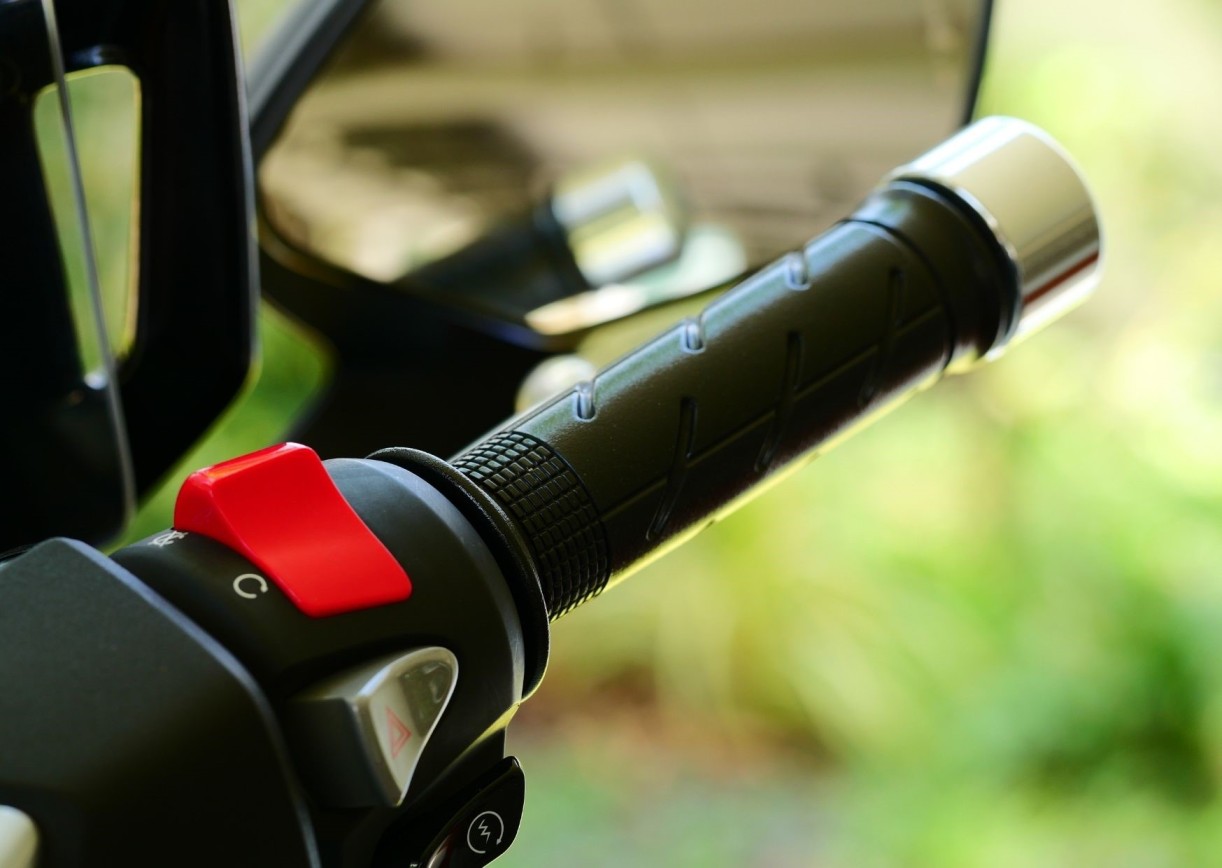
How to sell your bike at a good resale value
Your bike reminds you of road trips with friends and many other memories. But after a few years of use, there comes a time when you realize that you don't really need it now. Either you've outgrown your bike, upgrading to a four-wheeler or for any other reason, you have decided to sell your bike.
At this time, you want a good resale value for your bike and the key to a good resale value is finding a genuine buyer who can pay the highest price for it. But, before that, there is a crucial step of valuation to determine the offer you expect to get.
Read ahead to know what you should keep in mind while selling your two-wheeler at a high resale value.
Valuation: Numerous factors influence the value of a used vehicle. Several websites and tools are available online to calculate and provide you with an approximate resale price for your vehicle. You may also go to your local garage and ask for their opinion on the matter.
A few of the primary deciding factors are age, model, kilometre run, insurance record, ownership (whether it's first-hand or second-hand), overall condition of the vehicle, and engine. Always remember that getting a good value for your bike depends on the bike's physical condition and your negotiation skills.
Documentation check: To get the best valuation of your bike, ensure all the documents like the registration certificate and bike insurance policy are with you. The documents transfer process should be conducted in the new owner's name as soon as the payment is made.
Along with the RC and Bike Insurance Policy, the other required documents are Road Tax Certificate, Form 28 – Application, Grant of No Objection Certificate, Form 29 – Notice of Transfer of Ownership of a Motor Vehicle, and Form 30 – Application for Intimation and Transfer of Ownership of a Motor Vehicle.
You may visit your nearest RTO office for further details on the matter. You'll be given instructions to send certain documents and forms to the authorities, thus intimating them about the change in ownership and sale of your two-wheeler. You shall receive an acknowledgement providing that you submit the authentic documents.
Timely transfer of the mandatory third-party liability is essential. If the sold bike is involved in any accident and the insurance is not transferred, the original owner is held liable.
Finding a buyer: The most important thing for a good value is finding a buyer who is willing to pay you a good amount for your two-wheeler. There are two good options you can choose from to find the perfect buyer:
1. Local garages – It is an old-fashioned way of reselling goods, still one of the quickest to avail cash. The advantage of selling your bike at a local garage is that the finalization of the deal is often done the day you walk in. It is generally preferred to sell a thing locally to avoid processing fees.
2. Online Markets – It's becoming another popular and easy way to sell your old bike. There are multiple websites like OLX and eBay wherein you can upload a few pictures plus provide an in-depth description of your vehicle, and the interested buyers contact you.
Always be patient and wait for a few good offers while selling your bike. You might have to deal with a rookie with no knowledge, like a first-time buyer or an expert in the field who regularly deals with such negotiations. The key here is your negotiation skills. So be confident about your vehicle and your valuation, and you will surely find a good deal.
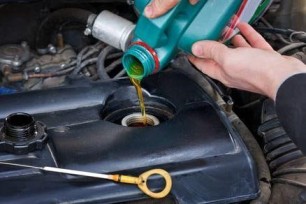
Eight signs that indicate an oil change for your car
Lubricating the car is essential to ensure your vehicle's overall fitness and functionality. The regular oil change is relatively an affordable maintenance task your vehicle requires, but the more important question is: How often should you change your engine oil? This entirely depends on the car’s usage. As a driver, you must look for typical signs your vehicle displays when it needs an oil change. You must detect the hints in advance to prevent them from developing severe damages.
This article will explain the top eight signs to heed that indicate an immediate oil change for your car.
• Check the oil change light. The engine sign will turn on if there isn’t enough oil in the engine. So, check the tank to discover what’s going on when the engine sign flashes.
• Engine knocking and noises. The oil acts as a friction barrier between engine components, preventing them from brushing and keeping the engine running silently. The engine noise will get intensified if the oil isn’t working perfectly.
• Change in the colour of the oil. The oil becomes darker and loaded with particles gathered from the engine as it gets utilized. Check your engine oil at least once every month by removing the dipstick from the oil tank. Make sure to wipe it clean before replacing it.
• Smoke from the exhaust. Your car’s exhaust always emits clear gas. But, if you observe smoke coming out from the exhaust, it’s time for a thorough engine inspection. It’s possible that you have a defective engine part or probably an oil leak.
• The odour of oil around the car. When you smell oil inside your vehicle, it’s usually a symptom of an oil leak. The car may overheat if you smell gasoline or vapours. In that case, you should schedule servicing right away after experiencing this.
• Excessive Travel. Consider an oil change quicker than the standard interval if you drive excessively. For example, you should change the oil every 10,000 km or half a year in new cars. For older cars, consider using high-mileage oil and change that every 5,000 Km.
• Fuel efficiency is poor. You would observe a decrease in fuel economy. However, this might indicate other issues with the fuel system, engine, or exhaust system. But an engine may fail to function if it isn’t getting adequately clean oil.
• The engine keeps stopping. If your car has been experiencing repeated engine difficulties, you should examine it. If your car stalls or feels like the engine seizes up at times, you might have low engine oil, poor oil, or an oil leak.
Only knowing how to drive a car isn’t enough; maintaining it is just as necessary. As with every other machine, your car won’t perform the best if not taken care of regularly. If you don’t change your car’s oil regularly, its performance can degrade quickly, resulting in catastrophic damage to your vehicle.
To avoid the consequences, you must watch out for indications that lead you to the warnings of an oil change. Like oil, your car insurance is another thing that needs continual renewal. Car insurances are financial saviours and are required when they are about to expire. Do not forget to check out your car insurance renewal dates and keep them updated to enjoy the uninterrupted benefits of the existing policy.
For your car insurance renewal, click HERE .
Disclaimer: The information provided above is for illustrative purposes only. To get more details, please refer to policy wordings and prospectus before purchasing a policy.
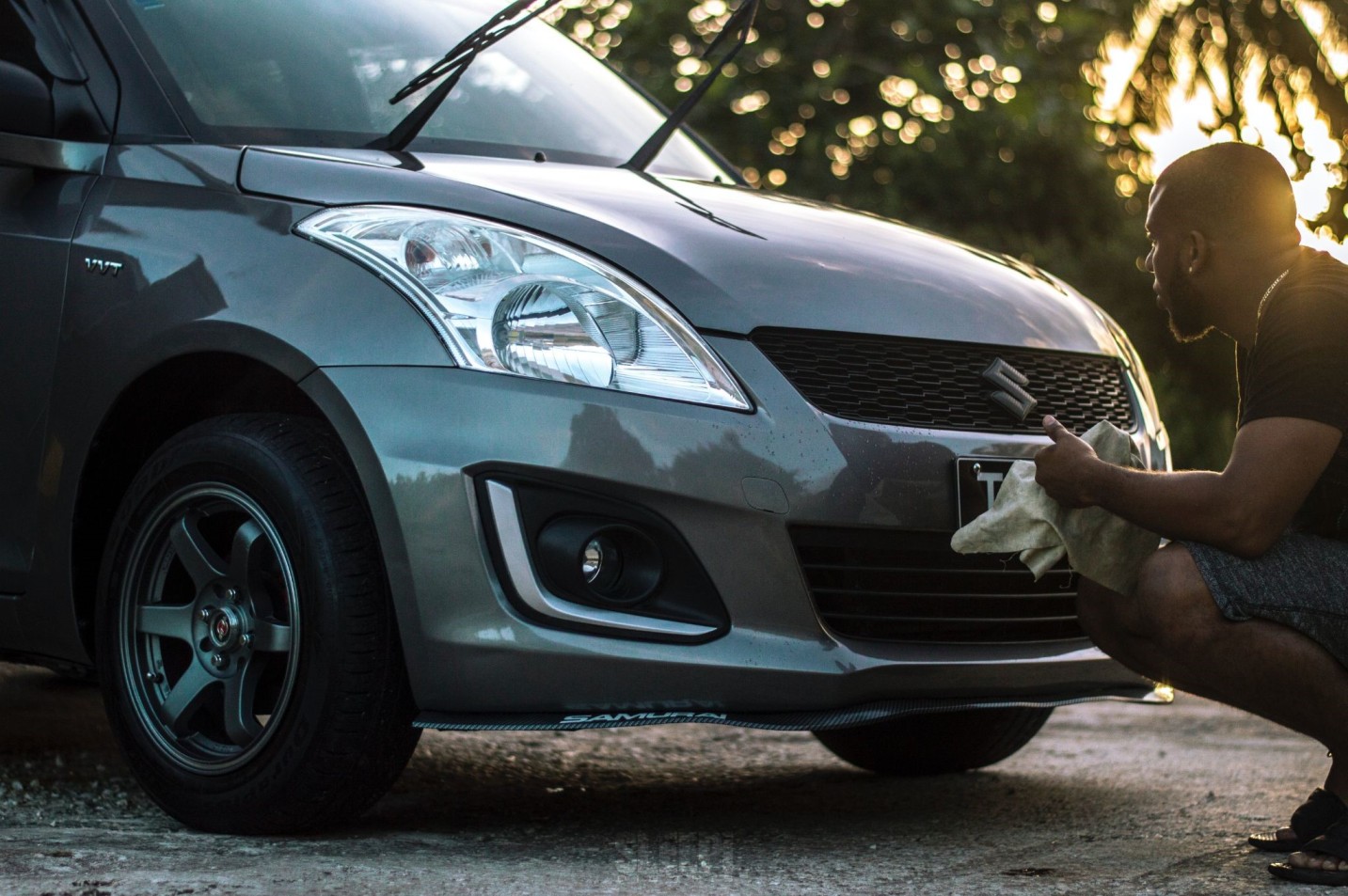
How to maintain the paint of your car
A shiny car with an attractive colour is a head-turner for anybody. After all, it's also a reflection of your personality. Yet, a few years down the line, the paint on the car usually loses its sheen and begins to look dull and dead. Failure to provide regular care to the car paint is the most common error car owners make.
Getting a brand new paint job can be heavy on your pockets and lower the value of your vehicle, but if you take care of things, your car's paint lasts for years. Along with below mentioned little important tips about proper care of the car's paint, we also recommend you to possess a car insurance that offers you coverage against any damages to the vehicle. You can also check online car insurance for the best premium.
1. Cover up your Car: Sometimes, the simplest of things are the most efficient ones. For example, putting a cover on your car for as long as possible is the key to preserving the paint. Also, owners who park their vehicles in an open area have to take special note of this point as their cars are more prone to damage by bird droppings, direct sunlight, and dust.
2. Regular Car Washes: A car wash at regular intervals would go a long way in protecting the paint of the car. However, only washing won't help; you need to wash it correctly to get the best results. For that, use a sponge, and a car shampoo specially made to suit a car's paint. Never use detergents and cloth. They cause more harm than good.
3. Drying is Equally Important: Washing alone isn't enough. If you leave your car to dry on its own, you're doing it wrong. The leftover water can cause a lot of damage to the paint. Always dry your vehicle right after a wash, that too in the correct way. Use a microfiber towel or a weave fibre cloth for the drying process.
4. Wax your car. Do not polish: While both of them are the techniques to bring out the sine on your car, there's a big difference between them. Polishing brings out the lower layer when a layer of the paint job is removed. On the other hand, waxing adds an extra layer of protection to the paint and is always suitable for your car.
5. Repair the damages: If your car has suffered from scratches and rust already, take the help of a car paint shop and repair the damages. The longer the scratches stay, the harder it takes to treat them and may permanently damage the paint job. The minor scratches can cause a lot of damage to the surrounding area of the body paint. So do not neglect these minute things and fix them before they create trouble for your car.
Additional coatings like vinyl wraps, paint protector film, and clear coat protectors can bring an extra layer of security for your car paint. Following these simple tips will surely turn your dull looking car into a shiny prize. As stated earlier, pick a suitable online car insurance plan as early as possible that will benefit you and your vehicle for an extended period.
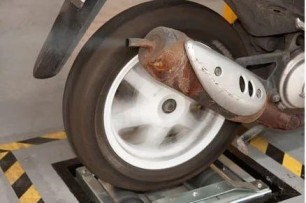
Essential tips to buying a second-hand two-wheeler
Two-wheelers are the most preferred travelling option for people from home to the workplace as they help your way through traffic smoothly. Moreover, as they have become daily support for middle-class families, many have dreamed of buying a two-wheeler, mainly since the pandemic emerged.
There are plenty of benefits to buying a second-hand two-wheeler. But before you purchase one, there are a few important things you need to keep in mind to ensure that you get the best value for money. For example, you don’t want to buy a vehicle that troubles you with additional money on maintenance or repair.
Below are a few tips to help you get the best deals for your second-hand two-wheeler.
1. Understanding the purpose of your vehicle:
If you need a vehicle for long trips, you will have to search for a high-performance touring bike to make your journey pleasant. Similarly, if you need a two-wheeler for your daily use, you may look for a comfortable motorcycle or scooter with a decent average.
2. Finding where you can purchase two-wheelers:
There are plenty of resellers available, both online and offline. You can directly approach offline showrooms of used two-wheelers or ask your friends for referrals. You can also check for resellers online to find a credible seller. It always helps if you connect with them in person and understand all the details.
3. Check the two-wheeler thoroughly:
Sometimes what you see online can be deceiving. Therefore, it is essential to check the vehicle personally. When you check the two-wheeler in person, you can observe the minor details such as any scratches, dents, and how well it is maintained. No matter where you buy the vehicle from, there are two necessary checks:
• Mechanical check
• Paperwork
In mechanical check, always look out for any rust, scratches, engine check, oil check, oil leakage (if any), dents, mileage, accident damage, brakes, air cleaners, gears, clutch, how many kilometres it has run already, and more.
Similarly, you need to check for a PUC certificate, RC book, service history, tax certificate, NOC, and more for paperwork.
4. Ask for a test drive:
The best way to know if the vehicle works appropriately and suits you the best is to take a test drive. Taking a test drive will help you understand if you are comfortable with the bike’s performance and power. Even if your bike looks perfect, it may not be a comfortable ride for you. Therefore, ensure that you do not miss out on the test drive.
5. Know the market value and negotiate well:
Once you are satisfied with the vehicle’s condition and the documents, you can do thorough research online about the current market value of the two-wheeler you are purchasing. You can talk to the seller and negotiate for the final price you are willing to pay. Once you and the seller come to a final price, you can sign the official paperwork and make the payment!
The tips mentioned above can help you pick the best two-wheeler and ensure that you are getting the best deals! But remember that buying a second-hand two-wheeler is just the first step. You need to ensure its safety by adding a layer of protection in the form of 2 wheeler insurance. You may opt for 2 wheeler insurance online and avail exciting deals and lower premium options offering the best value-to-your-money.
Click HERE to buy 2 wheeler insurance online for your two-wheeler.
Disclaimer: The information provided above is for illustrative purposes only. To get more details, please refer to policy wordings and prospectus before purchasing a policy.

How to keep your blood sugar under control
“Blood sugar” is termed as the amount of sugar present in the bloodstream of a body at a given time. Glucose is known to be the primary source of energy for a body. Therefore, having a stable blood sugar level is immensely important to carry a healthy lifestyle.
If the sugar level is disturbed, it can result in dullness in energy, anxiety, moodiness, fatigue, improper sleep, food cravings, brain fog, and diabetes if ignored for a longer time. Blood sugar can get out of control for two major reasons: either too much glucose or too little glucose for the body. In the first condition, your body gets more sugar than the body is habitual to, and in the second case, sugar is supplied in an inadequate amount. A balanced sugar level ensures sufficient quantity of glucose in the body.
Let’s understand 6 effective ways to keep your blood sugar level stabilized:
1. Daily exercise – Regular exercise helps maintain weight and improves insulin receptivity. An increase in the receptivity of insulin simply means better absorption of the sugar existing in the body. So remember, daily exercise is the most crucial aspect of the blood sugar management plan, and you should not skip it.
2. Tracking sugar levels – Monitor your blood sugar at regular intervals. It helps you track the sugar level and the changes you need to keep the levels managed.
3. Keep an eye on your diet – A well-planned diet is necessary for keeping blood sugar in control. The carbohydrates from foods are further broken down into sugars to provide a source of energy to the body. Hence, a low-carb and more fibre diet is ideal for balanced sugar levels. A rich fibre diet plays a preventative role and helps maintain your blood sugars.
4. Hydration – As a means to prevent your kidneys from flushing out the excess sugar in case of dehydration, drinking enough water throughout the day is very necessary. Water also ensures a lower risk of high blood sugar.
5. Quality sleep – Improper sleep or lack of adequate sleep can affect blood sugar and insulin receptivity. It releases growth hormones which may lead to weight gain and disturb the production and supply of sugars in the body. Avoiding caffeine before going to bed and sleeping in a cool and dark room helps you with a sound sleep.
6. Moderation – Maintaining moderation in daily activities will eventually lead to balanced blood sugar levels. Therefore, diet, weight, and proper exercise should be in a calculated proportion. Small steps to keep you active in the right direction can yield significant results in improving or preventing blood sugar.
Any diabetic person is not restricted from having health insurance and can get help for the care through a good health insurance policy. There is coverage of both type 1 and type 2 diabetes in a diabetes health insurance policy. In addition, health insurance also provides features such as illness related to diabetes and all costs and expenses for the treatment. Health insurance with Medicare advantage plans will also cover the cost of insulin. Make sure to check the benefits of the health insurance before you buy a health insurance policy.
WANT TO BUY AN IDEAL HEALTH INSURANCE PLAN? CLICK HERE FOR MORE INFORMATION…
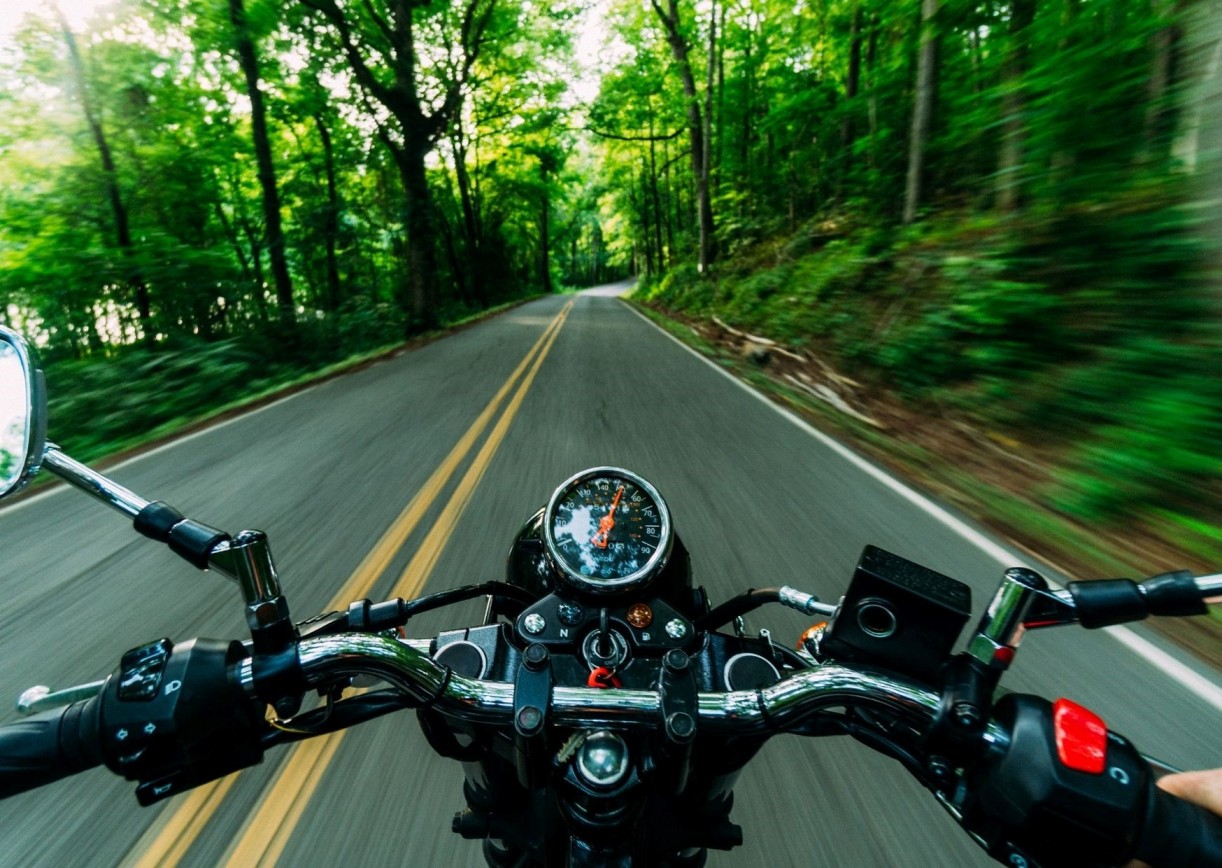
How can IDV and NCB benefit your two-wheeler
Understanding that two-wheeler insurance is as important as your health insurance because your vehicle needs coverage and security too, is very important. Not having insurance coverage leaves you vulnerable to financial damages during unfortunate accidents. But with insurance and its premium, there comes two more necessary factors, IDV and NCB.
If you are a first-time insurance buyer, then understanding IDV and NCB will help you decide on better insurance for your two-wheeler. Let's understand them and their benefits in detail.
Insured Declared Value (IDV) tells the actual market value of your two-wheeler. It's the highest sum of the amount insured that your insurance provider has promised to you. In case of theft, accident, or total loss of the vehicle, you will get compensation as per the IDV of your two-wheeler. Likewise, you can claim it in case of damage or replacement cost of your two-wheeler.
Two-wheeler is a tangible asset that doesn't always stay new. Hence, its value depreciates over the period, and as it becomes older, its premium amount also gets lesser. As a result, the IDV also reduces.
Never declare lower IDV than your bike's current market value to get a lower insurance premium. In case of any bike theft or total damage, your claim amount will be relatively much lower, thus making a significant loss to you.
No-Claim Bonus (NCB) is the total accumulated amount yearly. As its name suggests, it is a reward that the policyholder gets during insurance renewal for the two-wheeler. This bonus is offered in the form of a concession of the premium paid on insurance by you.
Below are the points why IDV and NCB play an essential part in determining your vehicle's insurance premium:
1. If you want to conserve your benefits of NCB, but unfortunately, meet with some mishaps, then you stand no chance to claim your bonus. A 'protection cover' can be helpful for such situations, which you can add to your NCB. It is nearly 10% of your premium amount. Though the number of claims are limited, this still helps to conserve your NCB bonus.
2. The main advantage of NCB is that it is more beneficial to the policyholder, not the vehicle. For example, if you opt a NCB for a new 2-wheeler, you can transfer it from your old two-wheeler to the new vehicle.
3. Your IDV mainly depends on the age of the vehicle. The other factor in deciding on IDV is the condition of your two-wheeler. So, it is crucial to evaluate IDV correctly, which further helps you with better insurance with a suitable premium.
4. When you opt for renewing your 2-wheeler insurance online, keep in mind that your premium depends on IDV. Lesser the age of the bike means higher IDV and higher premium.
As a final piece of advice, if you want to save more on insurance, then declare the correct IDV of your vehicle and get the benefit of your NCB. Both NCB and IDV balance your insurance premium and the cover to your two-wheeler.
LOOKING FOR RENEWAL OF YOUR TWO-WHEELER INSURANCE ONLINE? CLICK HERE FOR THE BEST POLICY…
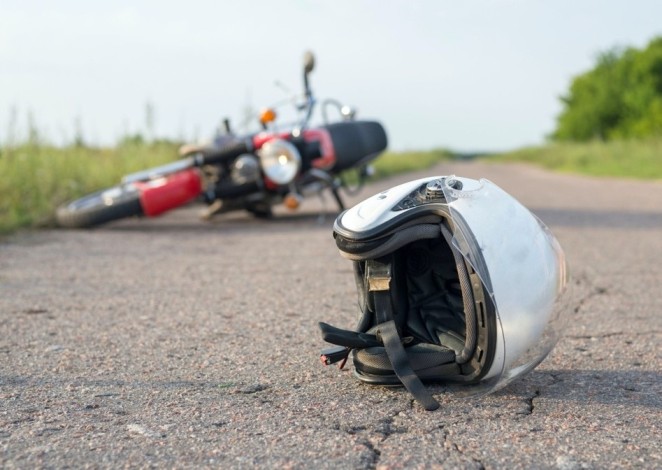
Best tips on claiming a third-party two-wheeler insurance
In recent years, people often inquire about the mandatory two-wheeler insurance and the strict regulations and penalties if a vehicle doesn't comply with an insurance policy.
Third-party 2 wheeler insurance covers the loss incurred by the property of a third-party or third-party injury by your vehicle. The third-party plan also covers the compensation in case of the death of the third party person. This insurance does not provide you with the option of choosing add-ons, nor does it offer the cover for your own vehicle damage like in the Comprehensive Insurance Policy.
But, the premium here is comparatively lower than that of the Comprehensive Plan, which as the name itself suggests, is a wide range of overall insurance for your vehicle. Therefore, it is always advisable to opt for the Comprehensive Policy for more features and a wider coverage option, including the mandatory third-party 2 wheeler insurance.
Now, read below the stepwise guide on how to claim third-party 2 wheeler insurance. Consider a situation where damage to your two-wheeler is caused by another vehicle in an accident. To file a claim to your insurance agency towards the medical expenses and repair of the vehicle under third party insurance, you need to follow the given steps:
1. Take down the vehicle's details involved in the accident and of the vehicle owner
2. Try and click photographs of your damaged two-wheeler
3. Look around for any surveillance cameras or eye-witnesses and note down their contact details
4. File a First Investigation Report (FIR) at the nearest police station from the event site
5. Inform the insurance company about the incident and follow their instructions for further action
6. File a case with the Motor Accident Claims Tribunal Court with the help of a lawyer. Attend the court proceedings, inform the court of the actual occurring and submit all the required documents and details
7. Share the court's order with the insurer, and you will receive compensation for the expenses of the damage
8. Always remain truthful and honest on your part without hiding anything from the insurance company. You may invite trouble by making a false claim or if the fault is on your part
Documents required at the time of making a third-party 2 wheeler Insurance Claim:
1. Driving License
2. Registration Certificate (RC) of the vehicle
3. Insurance Policy Documentation
4. Pollution Under Control (PUC) Certificate
5. First Investigation Report (FIR) of the incident
6. Receipt or bill of any vehicle repair
7. Duly filled and signed claim form
8. Duly signed Satisfaction Voucher (SV) or Discharge Voucher (DV)
Do not become aggressive or angry at any time and remain calm. It will help you think of the next step more efficiently. Trust the 2 wheeler insurance and be patient throughout the process. But, do not delay in taking action and starting the process. Avoid agreeing upon any monetary settlements as they qualify to be illegal.
It is always better to be cautious than to claim insurance for damages. So drive carefully and follow all the safety measures!
APPLY FOR THE BEST THIRD-PARTY TWO-WHEELER INSURANCE FOR YOUR VEHICLE HERE…
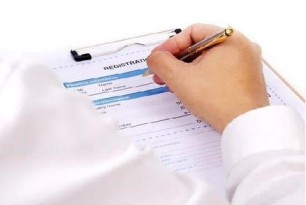
Guide for transferring your bike registration number while relocating to another state
Relocating to another state appears to be a daunting task if you’re experiencing it for the first time. There are multiple things to take care of while planning a relocation. From packing stuff and moving to another state to adjusting to the changing environment can irk you badly.
What worries you the most is the transfer of your bike registration that needs to be thoroughly examined during the entire relocation process. You need to acquaint yourself with the registration process of the new state and accordingly schedule your timelines for the same. This is indeed a cumbersome task, but we are here with our guide to make this process a swift one before it turns out to be a daunting task.
1. New state, fresh registration:
There are two scenarios that you need to understand. First, if you are relocating for less than a year, you don’t need to transfer the RC. But, if you’re planning to settle in the new state for more than a year, then you will have to go through a transfer process. Initially, you need to visit the RTO near your area and get a No Objection Certificate (NOC) as clearance for your bike. Then, after transferring to the new state, you will have to apply for fresh registration of RC of your motorcycle in the RTO of the new state.
2. What documents to carry?
Following is the list of documents required for the re-registration process.
• Original copy of Previous Registration Certificate.
• Three copies of Form 28 or the NOC issued by your local state’s RTO.
• NOC obtained from the local police station.
• NOC from Traffic police personnel.
• Form 20 as the application for the registration of the motor vehicle.
• Form 27 as the application for the assignment of a new registration mark to the motor vehicle.
• Attested copy of address proof.
• Attested copy of valid insurance.
• Attested copy of the Pollution Under Control Certificate (PUC).
• Copy of PAN Card or Form 60 and 61
3. Visit the RTO of the new state and complete the re-registration:
Visit the local RTO at your new location with all the above documents and fill your application for re-registration. Carefully provide all the essential information and verify all the documents thoroughly before submitting them to the officials. Once you fill the form and submit all your documents, you’re through your bike registration in the new state.
4. Fill the new road tax challan followed by vehicle inspection:
After completing the registration process at the new RTO, you will be asked to pay the required fees for that state’s new road tax challan issued by the RTO. Make the payment and collect your challan. The next step is the inspection of your bike. An RTO officer will conduct an assessment of your vehicle to check the condition of your bike and its parts. The primary purpose of the inspection is to ensure that your bike qualifies all the general safety requirements. All the collected data is stored for future reference along with the imprint of the chassis number.
5. The last step, and it’s done!
After completing verification, if your RC gets approved, you will be allotted a date to visit the RTO and collect your new RC.
To sum it up, make your relocation process manageable by following our guide. Follow all the steps mindfully and without any delays. Importantly, complete the entire registration process before your NOC expires. Considering all these factors, it is also essential to inform your bike insurance provider about your relocation. Provide all the details to the insurance company to verify your case and compute the insurance premium for your bike.
Click HERE to get the details about bike insurance to satisfy your requirements.
Disclaimer: The information provided above is for illustrative purposes only. To get more details, please refer to policy wordings and prospectus before purchasing a policy.
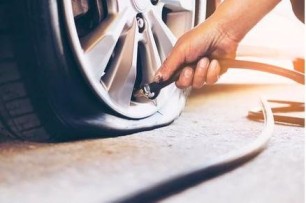
Guide to change the tyre of your vehicle on your own
Imagine you are on a road trip, and suddenly you encounter a “flat tyre” situation. While you may think you should let a mechanic handle it, sometimes giving it a try on your own can be a much easier job to do. Changing the tyre is not challenging, nor does it need you to be “strong.” Just a few tips, and you are sorted to fix the issue all by yourself. In this blog, we have broken down the steps to learn how to change your tyre quickly!
Before you learn how to change the tyre, here’s something you should note:
Remember to keep a spare tyre in your car for emergencies. Moreover, pull over to a safe place and avoid parking on a slope or a dangerous road.
Furthermore, whenever you park, keep your parking lights on. This is crucial when it is dark so that the passing vehicles on the road will be aware of your car which reduces the chances of accident.
What are the tools you will need?
Before we begin with the steps, these are the tools you will need to change your vehicle’s tyre on your own.
● A spare tyre
● Carjack
● Lug wrench
● Wheel nut key
● Reflective jacket
● Car owner’s manual/handbook
Additional things you may need:
● Torch
● Gloves
● Warning triangle
● Wheel wedges
● Short plank of wood (optional)
Step-By-Step Guide to change your vehicle’s tyre on your own:
If you learn how to change your vehicle’s tyre once, you can easily do it whenever you need it next time.
Step 1: Pull over to a safe place and prepare for your tyre change. Pull the hand brakes and keep your vehicle in the first gear. Now, take out all the essential tools mentioned above. If you have an automatic car, put it in the “park” mode.
Note: If you have people sitting in your car, ask everyone to stand in a safe place. Avoid people sitting in your car until the tyre has been changed.
Step 2: Now, loosen all the nuts from the wheel by rotating them anti-clockwise. Note that you only need to loosen the nuts to a point where they are rotatable with your hand and NOT remove them altogether.
Step 3: If you are unaware of your car’s jack point, check out your car’s manual. Now, use your jack to uplift the vehicle. You can use the small wood of plank to keep the vehicle stable; this is crucial when the road is uneven. Raise the car 10-15 cms above the ground.
Step 4: Next step is to remove the loosened wheel nuts and remove the tyre using a cross-wrench.
Step 5: You can remove the dirt or rust in the vehicle hub and start placing your new tyre.
Step 6: Fit all the nuts into the tyre and tighten them with your hands.
Step 7: Use the jack to lower your car to the ground level again.
Step 8: Now, tighten the screws fully with the cross-wrench. Give a final check to the tightness and if needed, go to the nearby gas station to get the pressure level checked.
Take your punctured tyre for repair and later replace it with the spare one.
Since you know how to change the tyre of your vehicle, next time, you won't have to wait on a street for a mechanic or a passerby to come for your help. Besides learning the essential maintenance tips, it is also important to invest in the vehicle’s safety against heavy damages caused due to uninvited accidents. Buy motor insurance online and get useful coverage add-ons for your vehicle’s servicing and repair works.
Click HERE to buy motor insurance online.
Disclaimer: The information provided above is for illustrative purposes only. To get more details, please refer to policy wordings and prospectus before purchasing a policy.

Here are few essential life lessons that bike trips can teach us
If you get to have a conversation with a motorhead, you'll probably hear them say that the joy of riding a motorbike comes second to none. A feast for the senses, riding is exhilarating and comforting to motorcyclists. It fosters joy, excitement, thrill, and pleasure. When you ride, you feel liberated, and there is always something new to discover and learn when you're on the roads.
Life throws a lot of experiences at you while on a motorbike trip. You can learn a lot about yourself and others while you are steering your way through the places and covering distances. Bike trips are much more than fun. Such trips can be a great way to connect to your deeper self and unravel fresh experiences and valuable lessons that may change your perspective towards life.
Here are a few life lessons that you can learn when you set out for a bike trip.
1. You’re a tiny but important part of this world:
As a motorcyclist, you share the road with fellow riders. It’s important to respect each vehicle on the road. So, consider yourself important as your discipline makes a significant contribution on the road.
2. Life is too short:
We all have witnessed reckless drivers—cutting into lanes without proper signals, speeding in single lanes, and whatnot. Viewing any mishap or accident is a terrible experience during your long riding trip, but you realize how suddenly things can change. It makes you more careful and appreciative of everything as they are here and now.
3. Focus on your goal:
While driving a car, drivers often engage in distracting activities like adjusting the AC knob and tuning to a radio station. But when you're riding, it's just you, your bike, and the road. There are no distractions, and you just concentrate on the road in front. Likewise, we must focus on what is essential in life. Concentrate on the future and don’t allow minor inconveniences to detract you from your ambitions in life.
4. You learn to let go your ego:
As we said, we've all seen our fair share of terrible drivers. Sometimes you are triggered and obliged to accept the situation because you cannot confront every other vehicle on the road. You learn to swallow your ego and remain patient to handle things maturely. Staying calm and tackling problems with patience is not less than any winning formula to live happily.
5. Practice makes an individual perfect:
No one is born perfect, but we can ace any talent with positive intent and dedicated practice. Every ride you take fills you with new experiences and learnings that you can ponder and do better on your next ride. Consistency and a positive mindset are vital to master your fears and weaknesses.
When you are riding, relax your soul and enjoy the present moment. There's plenty to experience even in the most unlikely locations. Hop on the motorbike and discover life like never before. Like life, the roads are uncertain; but something certain is ensuring safety. This is yet another lesson that bike trips teach us; to be responsible for your safety and possessions. So, be responsible and purchase bike insurance for the additional protection of your bike. You may surf through multiple bike insurance online and buy the one that assures value for money.
Click HERE to get bike insurance online.
Disclaimer: The information provided above is for illustrative purposes only. To get more details, please refer to policy wordings and prospectus before purchasing a policy.
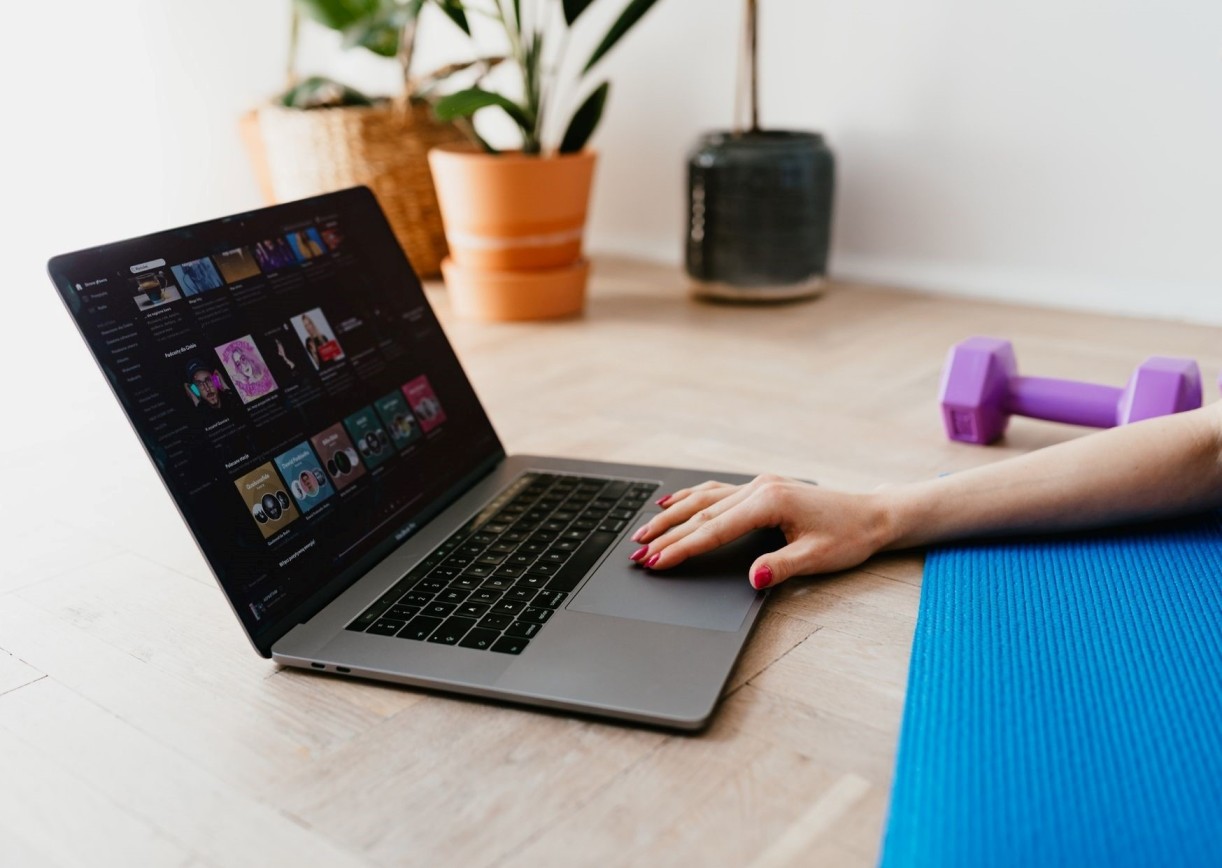
Best home-workout equipment for you in 2021
People's concern over their health and fitness has increased since the outbreak of Covid-19. Due to the ongoing pandemic, we have all been practicing social distancing. It has become evident that we don't need a gym membership to keep ourselves fit. Instead, health from home has become just as popular as work from home.
There are multiple applications, websites, and tutorial videos available online to guide you through a proper workout regime. Whether you have registered for a virtual fitness class or have decided to go solo in your home gym, many types of equipment will help you maintain a healthy body and hopefully relieve your stress.
So, here are a few recommendations for home-workout equipment helpful to achieve your fitness goals.
1. TRX GO All-in-One Suspension Training:
This set is perfect for a full-body workout. It's lightweight, affordable, convenient, and portable. The seven-piece set includes full-body training tools for exercises at home, outdoor, or on the go. It should be a part of your house to feel like you have a private gym.
2. Yoga Mat:
A mat isn't just for yoga. It is helpful for bodyweight exercises like stretching and core work out since it makes them comfortable and easier to do. Mats are affordable, long-lasting, and require no maintenance. In addition, they have a good endurance ability to withstand pressure and give total comfort even while doing difficult yoga asanas.
3. Resistance Bands:
The main use of a resistance band is stretching and strength training. It can be used to work on every muscle group in your body. There are even more exercise options when it is fastened to a post or a door and helps you improve your posture while building muscles. Easy to use, it can be your on-the-go fitness aid.
4. Treadmill:
Walking is the most efficient exercise for any age group. But, many of us, with our busy schedules, have limited space and time for our daily physical activity. So that makes the treadmill a relatively easy piece of workout equipment to use.
5. Ankle Weights:
Ankle weights help you diversify your at-home workouts. They make your lower body workout more effective and are highly recommended if you aim to increase your speed.
Choose your at-home workout equipment based on these three criteria:
1. Cost - Figure out the amount you are willing to spend on your home gym and look for items that fit your budget.
2. Use - Determine your personal goals; if you intend to work out to lose weight, build a muscular body, or straight-up gain strength and maintain overall fitness. Then select gears that provide you functions related to your personal goals.
3. Space - If you live in a city apartment, sharing it with other flatmates, you may only have your bedroom for a home gym. So pick wisely, considering the actual storage space you have.
While choosing the best home workout equipment, remember to decide on a smart health insurance plan for you, too. Physical activity and a healthy lifestyle prevent diseases, whereas health insurance provides financial security against these diseases.
Start planning your home gym today, and once you start working out, be regular and never miss a day.
THINKING ABOUT THE PERFECT HEALTH INSURANCES FOR YOU? CLICK HERE TO KNOW MORE ABOUT THEM…
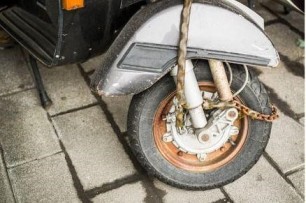
Important things to know while disposing off a two-wheeler
There is no denying that many outdated vehicles are still plying on Indian roads, causing massive pollution. Therefore, the Government of India has unveiled the Nation's new Vehicle Scrapping Policy. The main object of this updated policy is to get rid of old and unfit automobiles that produce pollution. The government aims to clean up the air, and the efforts are commendable.
If you have an outdated two-wheeler at home and are considering scrapping it, here are some things you should know prior.
1. Mandatory fitness examination:
The procedure of obtaining a fitness certificate would become significantly strict under the updated scrappage Policy. If your two-wheeler is more than 20 years old, you will have to take a fitness test for your vehicle.
Automobiles registered for business use are subject to the fitness standards once they go beyond the 15 years mark. Computerized workshops will be set up around the Nation. This will result in pinpoint accuracy and faster tests.
2. Compulsory end of life vehicle certification:
If your bike fails the fitness test, you will be required to get an ‘End of Life Vehicle certificate’. This is because used automobiles contain dangerous compounds such as lead-acid batteries, lubricating oil, coolant, braking fluid, and catalytic converters. If not disposed of properly, these compounds can contaminate the environment and risk human health and wildlife.
Benefits of scrapping your old bike:
If you're purchasing a new vehicle under the scrappage program, you will receive a 4 to 6% refund off the total price. In addition, state governments can recommend a road-tax credit of up to 25% for personal automobiles and up to 15% for commercial automobiles. In some cases, automobile manufacturers also offer a 5% discount to those who present the 'Scrapping Certificate,' and registration expenses will be waived when purchasing a new vehicle.
Additional pointers to know:
• The policy will not apply to vintage bikes.
• Hybrid and electric bikes are exempted.
• A bike that runs on alternative fuels like CNG is exempted.
When will the policy come into action?
The updated policy will come to force starting with large commercial automobiles, requiring mandatory fitness testing beginning April 1st, 2023. In a phased approach, all other vehicles will be subject to the fitness test starting June 1st, 2024.
Final Say:
The policy is set to come into action in the year 2022; the most crucial stage for the proposed program to succeed is to construct the necessary infrastructure across the nation immediately. As things stand, India has seven computerized fitness test facilities and two official scrappage sites. To meet the market demand, more such facilities are provisioned in coming years.
This policy will encourage the bike sale, benefit the environment, and a step towards a greener future. While benefiting from all the incentives when you dispose of your 2 wheeler, add an extra benefit of insurance to the bundle of happiness. Buy a 2 wheeler insurance online, customize your plan according to your needs, and include the add-ons that can help you when you plan to buy a new two-wheeler after disposing of the old one.
Click HERE to get 2 wheeler insurance online.
Disclaimer: The information provided above is for illustrative purposes only. To get more details, please refer to policy wordings and prospectus before purchasing a policy.
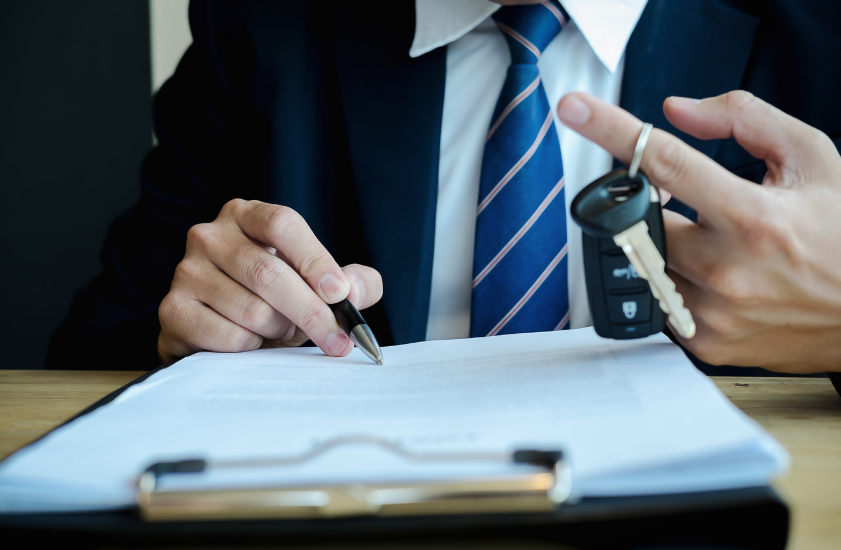
Benefits of usage-based insurance for your car insurance
Insurance for your car is as important as your health insurance because your vehicle also needs a safety shield. It protects your vehicle against incidents like accidents, theft, or damages. You might be aware of the conventional way of car insurance. But here, we provide you with information about usage-based car insurance and its benefits.
The very first question that arises in your mind is, "What is usage-based car insurance?" User-based insurance or UBI combines the expertise from telecommunication and informatics sectors to serve the auto industry. The traditional car insurance policy's premium is based on the car's model and not the driving abilities. So even if you use your vehicle less frequently and have good driving skills, you have to pay a particular premium according to the standard calculation.
Whereas, UBI is a new concept in the Indian car insurance segment that usually collects the available information from the vehicle with the help of Telematics. The accurate data helps insurers to get a better estimation of mileage and driving habits of the driver. Then, the insurer decides on the premium amount based on your driving skills, basic vehicle information, and driving data.
When you opt for UBI, you have to install a tracker on your car, which will collect your driving data, and it will be used on a large stage. It will create your driving risk profile for your welfare and your insurance company. It stores the following data:
1. Frequency of usage of your car
2. Average speed of your car
3. Accelerating and braking pattern of your car while you drive
4. Based on your driving, you are rated if a safe driver or harsh driver
This information is used to charge the appropriate premium for your car insurance. So if you have a low-risk profile with an excellent driving score, you have to pay less premium than a reckless driver.
Also, this UBI comes in variants like:
1. Pay as You Drive (PAYD): Premium charged based on the amount of driving
2. Pay How You Drive (PHYD): Premium is decided based on driving skills
3. Distance-based Insurance: This is miles-based insurance; in this, the total number of miles covered by the car during the policy period will decide the premium
Let us share some of the advantages of UBI:
1. Having a personalized car insurance plan can save your pocket to a reasonable extent
2. It's a rewarding system for safe and skilled drivers
3. In critical times like accidents, your location is easily tracked and rescued on time with medical aids
4. Insurance companies get closer conversations and better relations with customers
5. This information or data analysis helps in identifying and reducing accidents or rash driving
6. Increases customer's interest as well as reduces claim cost. This further results in low-risk driving and safe drivers
Lastly, the UBI concept is still a new segment in the insurance industry but transforming digitally with more accurate information and benefits. So, get the advantages from UBI when you buy your online car insurance.
WANT TO KNOW MORE ABOUT ONLINE CAR INSURANCE POLICIES? CLICK HERE TO KNOW MORE…

Interesting facts to know about FASTag before installing it
The Indian government has recently stated that installing FASTag is mandatory for every vehicle. Various toll plazas in the country have already adopted it for toll collection. This initiative helps to make the cashless tax collection and reduce waiting time at the toll plazas.
FASTag comes in the form of a sticker or a tag that you need to stick on your car’s windscreen. You can recharge FASTag as per your requirement. When your car passes through a toll plaza, it automatically deducts a certain amount from your bank account or a prepaid wallet. FASTags are a step forward in making India digital. Following are some interesting facts and benefits of FASTag if you are still sceptical about installing it.
Interesting facts to know about FASTag.
1. Without FASTag, you pay double:
Although the authorities have made the use of FASTags compulsory for all vehicles, they are more than just mandatory. If a vehicle does not have it installed, they have to pay double what is paid through FASTag. This rule has been imposed to promote the use of the electronic chip and reduce waiting time and fuel consumption at the tolls.
2. RFID technology:
FASTag uses the RFID or Radio Frequency Identification technology for making payments directly when the vehicle is still in motion. The FASTag sticker is affixed on the vehicle’s windscreen and lets you make direct payments from your bank account or wallet.
3. FASTags are bank-neutral:
FASTags are available in most of the certified banks. They are also available at various toll plazas, digital wallets, and unified payment networks. Vehicle owners can simply visit any of these locations or visit these apps with the required documents to open their FASTag account and recharge it.
4. FASTags have validity:
FASTags have a validity of five years from the day of issuance. This means you will have to renew your FASTag account every 5 years. However, there is no expiry date on your recharge money, and you can use it as per your requirements. To check the validity of your FASTag, you can log in to the bank’s FASTag portal or mobile app.
5. Recharge as per your requirements:
There are two ways you can pay tolls using FASTag- by linking FASTag to your bank account where the money is directly deducted or by recharging your online wallet. If you choose to recharge, the minimum amount is Rs. 100. The recharge can only be done through online mode.
6. FASTags send you SMS alerts:
When you open your FASTag account and link your mobile number to it, you will be notified via SMS whenever there is a deduction from your account. You will also receive details regarding available balance, recharge confirmations, and alerts if you have a low balance.
Technological advancements have been shaping the future of India in various dimensions, and road transport has been receiving the optimum results. Severe commutation issues like long traffic jams, chaos at the toll plazas, and road accidents, have been brought under control with the wise use of technology.
FASTag has been a significant contributor to this movement, and it will show a massive positive impact in the coming years. Be a responsible driver and install FASTag in your vehicle to play your role in the initiative. Use these technology initiatives in your favour to have a comfortable and safe driving standard. And when safety is concerned, think of car insurance. Reduce dependencies on additional unwanted expenses and cover your car under the benefits of a comprehensive car insurance policy. Always look after your car insurance renewal to enjoy uninterrupted services for a long time.
Click HERE to know more about the best car insurance renewal options.
Disclaimer: The information provided above is for illustrative purposes only. To get more details, please refer to policy wordings and prospectus before purchasing a policy.


